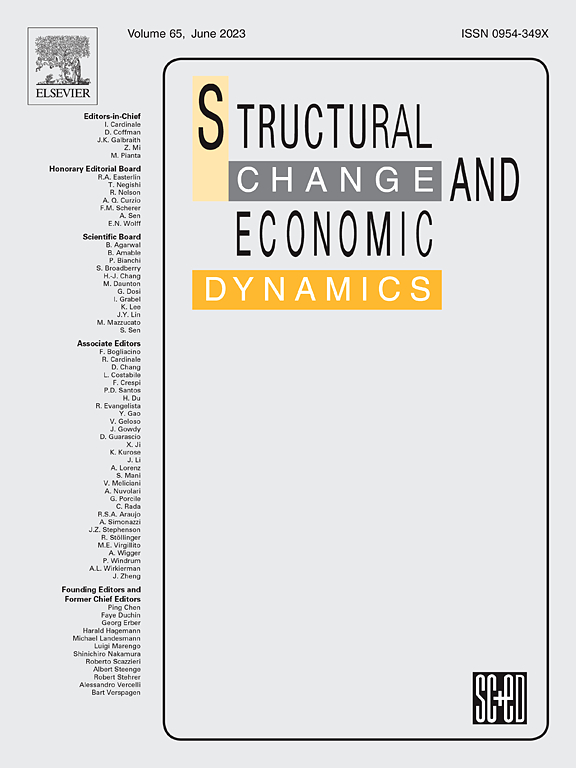Distribution dynamics of alternative productivity measures: An empirical analysis
IF 5.5
2区 经济学
Q1 ECONOMICS
引用次数: 0
Abstract
This paper revisits the productivity convergence debate from the perspective of Structural Economic Dynamics. Building on a novel indicator of total labour productivity, we provide a comprehensive analysis of productivity convergence across 61 economies over the period 1995–2019. Instead of using regression methods, we make use of the distribution dynamics approach which captures the full evolution of productivity distributions over time. Our results reveal contrasting patterns of convergence depending on the measure chosen. While total factor productivity suggests reduced dispersion and a tendency toward homogeneity, apparent labour productivity and our measure indicate persistent polarisation, with countries clustering into high- and low-productivity groups.
生产率测度的分布动态:一个实证分析
本文从结构经济动力学的角度重新审视生产率趋同的争论。在总劳动生产率这一新指标的基础上,我们对1995-2019年61个经济体的生产率趋同进行了全面分析。我们没有使用回归方法,而是使用分布动态方法来捕捉生产力分布随时间的完整演变。我们的结果揭示了不同的模式的收敛取决于所选择的措施。虽然全要素生产率表明分散性降低和同质化趋势,但表观劳动生产率和我们的测量表明持续的两极分化,国家分为高生产率和低生产率组。
本文章由计算机程序翻译,如有差异,请以英文原文为准。
求助全文
约1分钟内获得全文
求助全文
来源期刊

Structural Change and Economic Dynamics
ECONOMICS-
CiteScore
9.60
自引率
4.90%
发文量
159
期刊介绍:
Structural Change and Economic Dynamics publishes articles about theoretical, applied and methodological aspects of structural change in economic systems. The journal publishes work analysing dynamics and structural breaks in economic, technological, behavioural and institutional patterns.
 求助内容:
求助内容: 应助结果提醒方式:
应助结果提醒方式:


